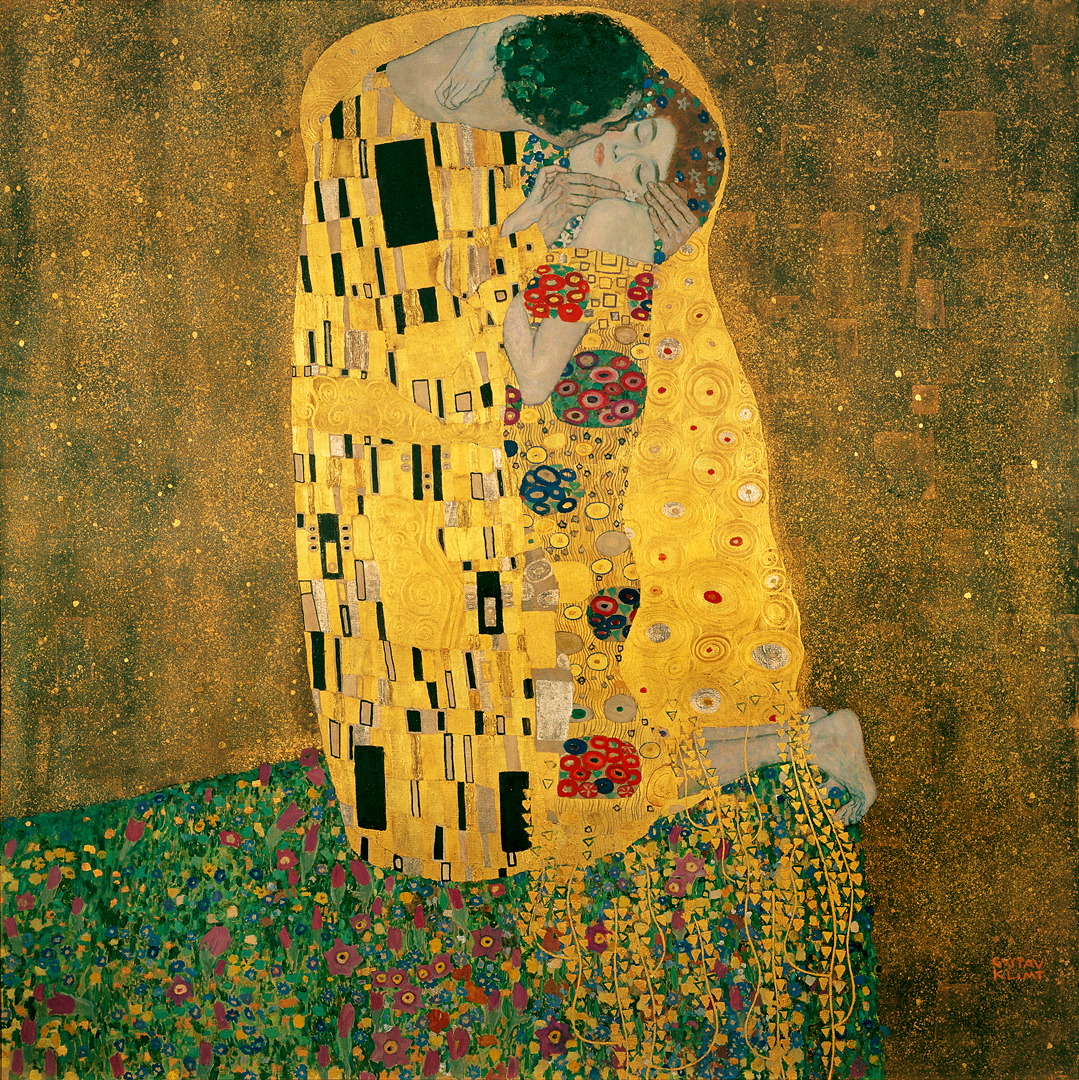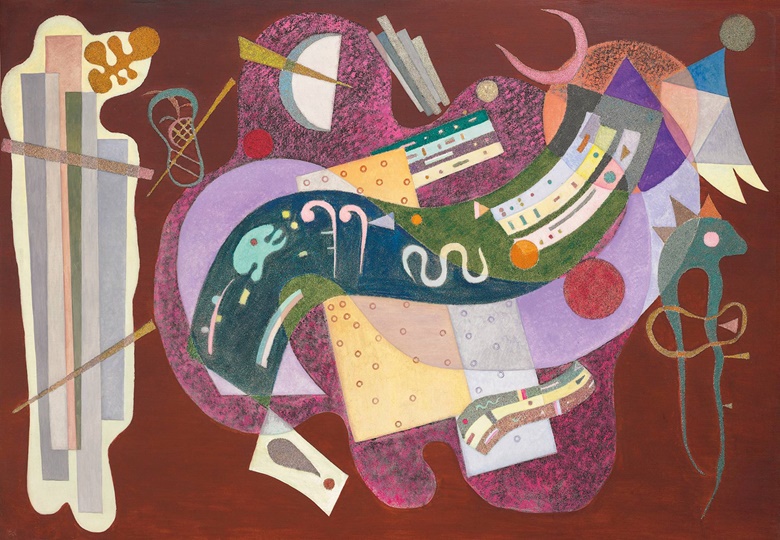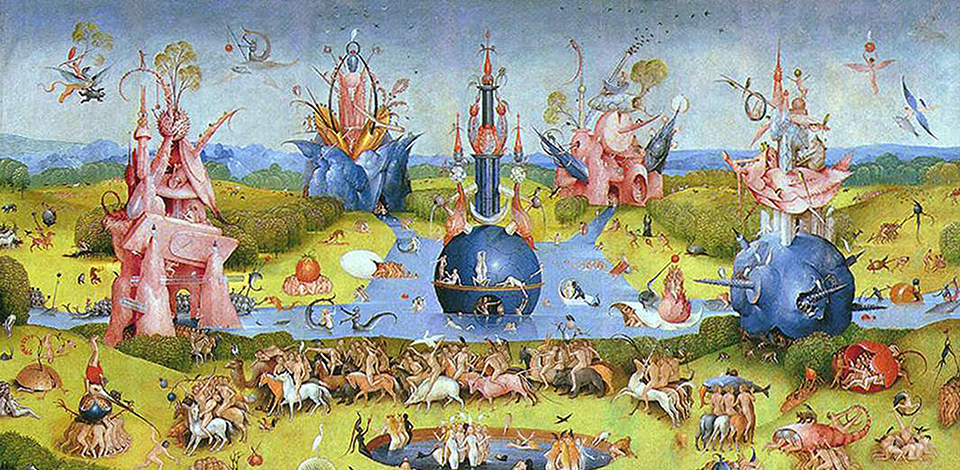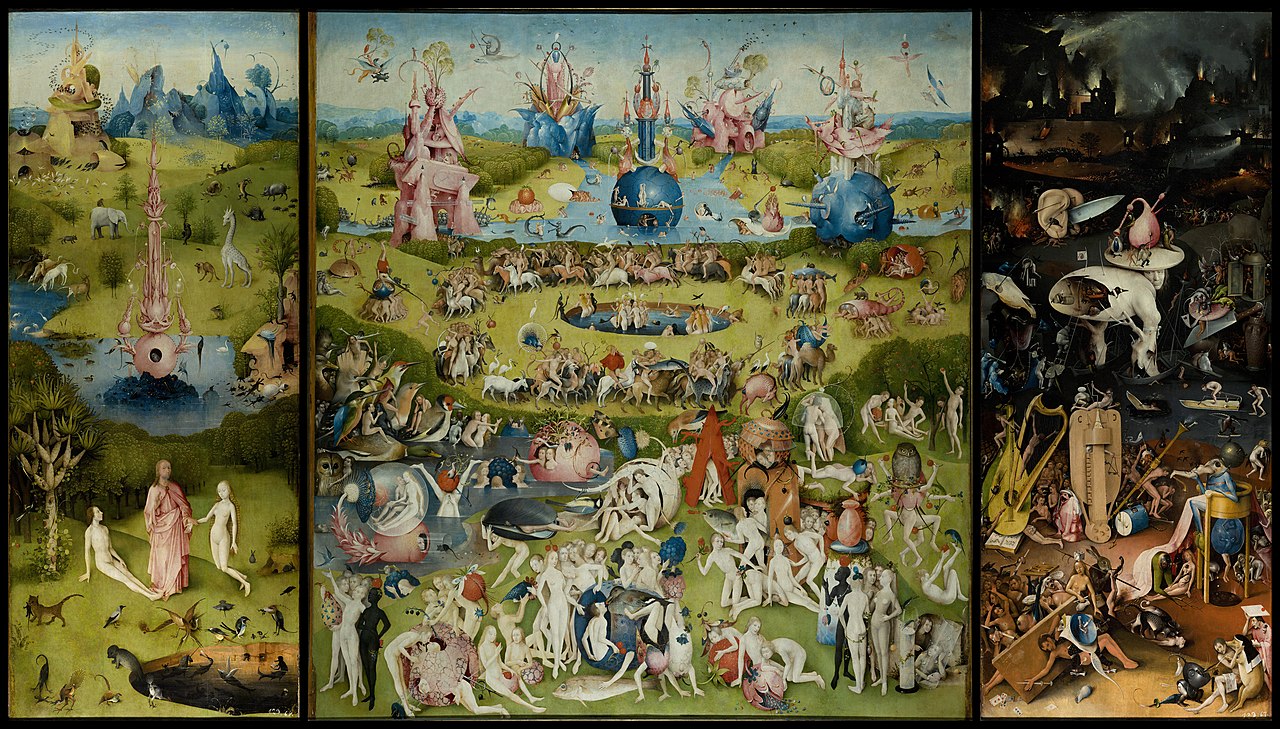Also see Klimt at Auction
Gustav Klimt, Bauerngarten (Blumengarten), oil on canvas, painted in 1907 (Estimate upon request)
Among the finest works by Gustav Klimt ever to come to auction, Bauerngarten was painted during the golden years of Klimt’s career and was a highlight of the critically acclaimed Painting the Modern Garden exhibition at the Royal Academy of Arts in London last year. This profoundly beautiful work is to be offered at auction for the first time in over two decades, set to lead Sotheby’s Impressionist & Modern Art Evening Sale in London on 1 March 2017.
KLIMT’S GOLDEN YEARS
While Klimt is largely revered for his opulent, symbol-laden portraits of the Viennese bourgeoisie, these works were just one aspect of his artistic expression. It is, arguably, in his landscapes, that he found the freedom to express himself, and to experiment, more freely. His landscapes, therefore, not only represent an important and highly personal facet of his career, but are also critical to our appreciation of the artist.
One of Gustav Klimt’s finest landscapes, Bauerngarten was first exhibited in the landmark 1908 Kunstschau in Vienna; a pivotal moment for Klimt – who had not had a public showing of his work for three years – the exhibition caused a sensation and confirmed the status of Klimt as the leading modern artist of his time. Even then the luminous painting was considered important, acquired just two years after by the National Gallery in Prague.
Landscapes are integral to Klimt’s oeuvre, revealing a more personal and experimental side to his painting that differs from his portraits, which were, for the most part, commissions. At the same time, even in his landscapes, there is often an echo of a figure – here, the shape of a woman is almost tangible under the triangular composition of blazing colours of the flowers. Indeed, Bauerngarten was painted at the same moment as some of Klimt’s most celebrated and innovative figurative works, including his golden portrait of Adele Bloch-Bauer and
the gilded Der Küss.
Gustav Klimt, Adele Bloch-Bauer I, 1907, oil and gold on canvas, Neue Galerie, New York
The joyous mood of the painting tells a story too. Each summer, Klimt would retreat to the shore of Attersee for three months to relax and paint, accompanied by family and friends including his lifelong companion, the celebrated designer Emilie Flöge. It was a happy time, and the inspiration for Bauerngarten was found in the rustic garden of a local farmer, with its informal profusion of poppies, daisies and roses transformed into a shimmering array of colour.
KLIMT & HIS CONTEMPORARIES
The influence of Impressionist and Post-Impressionist artists on Klimt’s landscapes is evident, from Claude Monet’s treatment of his famous waterlily pond to Vincent van Gogh’s ability to make canvases pulsate with energy.
The square canvas chosen by Kilmt for this work heightens its visual impact, and it was in the same decade that Monet started to use this format to depict his waterlily ponds at Giverny. Both Klimt and Monet used this technical innovation to break away from the accepted form of traditional landscape art. Stripping away the sky, both artists created increasingly abstract ideas of the landscapes they were creating, focusing less on faithful renderings but more on the fleeting yet joyous patterns and colours.
In 1906, Klimt attended an exhibition of works by van Gogh in Vienna, and his subsequent appreciation of van Gogh sparked a significant shift in his appreciation of paint. Drawing on this, the dynamic brushwork and vibrancy of Bauerngarten reflect this turning point in Klimt’s style.
GUSTAV KLIMT (1862 – 1918)
A market sensation (ranking among the few artists whose work has achieved over $100 million); Gustav Klimt is widely acknowledged as one of the founding fathers of Modern Art. Celebrated for his highly decorative style – a style that draws on his contemporaries Monet and Van Gogh but is at the same time unique – his unfading popularity is down not only to the universal themes with which he worked (love, beauty and death), but also to the ornate and jewel-like surfaces he created, thanks in no small part to the influence of Japanese art.
_______________________________________________________________
Gertrud Felsöványi’s granddaughter, commenting on behalf of the family heirs, said:
“This portrait portrays the brave and determined nature of my grandmother. Her strength of character and beauty lives on in this visual embodiment. My father, Anthony Felsöványi, last saw this painting in June 1938 when he left the family home for the last time to depart for America. At that time my grandmother had been advised to leave her family home to live in a less grand home to try to avoid the attention of the Nazis, given her Jewish ancestry. Eventually, under duress, in 1939 she left Vienna altogether to join my father in America, having left all of her belongings behind -including this painting. Her home had been taken over as a Nazi headquarters and she had left her valuable belongings with friends and acquaintances. After the war, she never returned to Vienna. Only my father’s sister did, with the hope of retrieving some of their belongings, but to no avail. My father said that my grandmother never again mentioned the painting or the valuable belongings she had left behind.“My father recalled that throughout his childhood the painting was displayed in the entrance hall of their family home. It was displayed prominently on a stand rather than hung on the wall, and faced out to the gardens. After he had left Vienna, my father hung a reproduction of the Klimt portrait of his mother in his home in America. While sadly my father is no longer alive, having died two years ago aged ninety-eight, this settlement would have meant a great deal to him, as it does to me and the other family heirs with whom this settlement has been agreed. Before his death my father had wanted to thank Mrs Ucicky for her longstanding desire to work towards this settlement, and our family wishes to thank her as well as the researchers and others involved in bringing about this resolution.”
Ferdinand Hodler’s Der Auserwählte (now in the Kunstmuseum, Bern)
and a further important work by Gustav Klimt, Judith I (now housed in the Belvedere, Vienna).
He had also commissioned the artist Koloman Moser to design Gertrud and her first husband’s apartment in the Wiener Werkstätte style, but following Anton’s death Gertrud moved back to the family’s residence where she continued to run the Sanatorium. When the Nazis arrived in Vienna she came under increasing pressure due to her Jewish ancestry, and in early 1939 reluctantly agreed to leave Vienna for exile in the United States, leaving the entire Felsöványi art collection behind. When Gertrud’s daughter, Maria, returned to Vienna after the war to reclaim her family’s property she discovered that it had all been sold by her mother’s friend –herself under duress by persecution -and the Felsöványi family was not able to retrieve a single work of art. Untraceable by the Felsöványi family,by then Bildnis Gertrud Loew had been acquired by Gustav Ucicky, one of Gustav Klimt’s sons by Maria Ucicka who had modelled for the artist. Gustav Ucicky was a film director who rose to prominence during the Weimar Republic. He acquired a considerable number of works by his father, which he left to his wife Ursula after his death in 1961. In 2013 Ursula Ucicky established Gustav Klimt | Wien 1900-Privatstiftungwhich houses this collection of works and is also a non-profit cultural, art historical, scientific and educational centre. In addition to aiming to preserve and research the life and oeuvre of Gustav Klimt,Ursula Ucicky wished to research the history of the acquisition of the artworks in the collection, enlisting notable provenance experts to carry out the research. Following extensive research, a settlement between the Felsöványi family and the Klimt Foundation was reached under the Washington Conference Principles on Nazi-Confiscated Art and an agreement that Bildnis Gertrud Loew will be offered for sale.
Gertha Felsöványi
Gertrud Loew, known as Gertha, was nineteen years old when she was painted by Gustav Klimt in 1902. Dr Anton Loew had become one of the first benefactors of the Secession movement, co-sponsoring the building of the Secession, and in addition to works by Klimt, Hodler and Segantini, he collected antiques, baroque and renaissance art. In 1903 Gertha married Hans Eisler von Terramare in the Minoritenkirchein Vienna. After the early death of the couple’s only daughter Gertrude, the marriage fell apart. Gertha moved back into the family residence next to the Sanitorium and took over the running of the Sanatorium after Dr Anton Loew’s death in 1907. In 1912 she married the Hungarian industrialist Elemér Baruch von Felsöványi with whom she had three children. In November 1923 her husband caught pneumonia returning from a nightclub without an overcoat and died a few days later.
When the Nazis arrived in Vienna, Gertha was encouraged by her lawyer to leave her home and move into more modest accommodation, and then under increasing duress she reluctantly left in 1939, entrusting her artworks to a friend for safekeeping. Although her son Anthony was already living in America, Gertha was denied an entry visa and was not allowed to disembark when she docked in New York harbour; it was only through the intercession of Eleanor Roosevelt that she was allowed a day pass to spend Christmas 1939 with her son. She continued her journey to Colombia and spent time as a French teacher in Barranquilla while she waited for the grant of a US visa. In June 1940 she arrived in the USA where she started a new life, working nightshifts. When Gertha’s daughter Maria returned to Vienna after the war to reclaim her family’s property she discovered the fate of her family’s collection. Having learned about the losses of her father’s legacy, Gertha Felsöványi never returned to Austria. She died in Menlo Park, California in March 1964 at the age of 80.
A Portrait Painter of International Acclaim
Bildnis Gertrud Loew was exhibited on numerous occasions during the artist’s lifetime, both in Austria and Germany.The portrait was first exhibited in the Wiener Secession's Klimt exhibition in 1903 where it was reviewed by the great Viennese art critic,Ludwig von Hevesi, and describedas ‘. . .the most sweet-scented poetry the palette is able to create.’
Klimt’s foundation of the Secession and its association with private supporters allowed him to cultivate prospective commissions as well as exhibitions on a large scale, in amanner rarely afforded to artists before him. The growth of private patronage from the haute-bourgeoisie was needed to replace the large-scale commissions from the State and city of Vienna which previously supported many of Austria’s artists. Klimt’s portraits were much in demand and he rapidly became the highest-paid artist in Vienna. His popularity and status led to a number of prominent exhibitions –not least the Kollektiv Ausstellung Gustav Klimt at the 1903-04 Secession –but also to a market for reproductions of his best works. In 1908 the art dealer H. O. Miethke, of the eponymous gallery, initiated the creation of a series of 50 lithographs of Klimt’s finest work, simply entitled Das Werk Gustav Klimts.
The present work was chosen alongside several of the great Golden period works, as well as a selection of landscapes, portraits and allegorical works. It was this collection of prints that helped the artist to gain an international reputation, and Emperor Franz Joseph I of Austria was the first person to purchase a folio set.
Sotheby’s The Triumph of Color: Important Works from a Private European Collection in theauctions of Impressionist & Modern Art this November in New York.
Put together primarily in the 1970s and ‘80s, the collection today represents one of the finest assemblages of post-Impressionist and Modern Art in private hands. The collection is defined by three superb masterworks by Wassily Kandinsky and rare works by the key protagonists of Fauvism and German Expressionism.
Several of the paintings were loaned to the Courtauld Institute of Art in London for over fifteen years, where they provided a unique display of works from the Fauve movement, the Expressionists and the route to Abstraction in the early-20th century.
Helena Newman, Head of Sotheby’s Worldwide Impressionist & Modern Art Department, commented: “Infused with an intensity of color and expression, this collection of works provides a rare and exciting opportunity to acquire several exceptional examples of early-20th Century Art. It is unprecedented for three major paintings by Kandinsky, each from a key moment in the artist’s creativity, to appear at auction together, and complemented by stunning examples by the Fauves and the German Expressionists, the collection encapsulates the triumph of color in art at the start of the 20th century.’’The three major paintings by Wassily Kandinsky chart the artist’s development across four decadesfrom the earliest successes to his greatest achievements.

Wassily Kandinsky, Zum Thema Jüngstes Gericht (detail). Painted in 1913. Estimate $22/35 million. Courtesy Sotheby's.

The group is led by one of the last 1913 oil paintings left in private hands, Zum Thema Jüngstes Gericht, a unique composition from this prime year of Kandinsky’s career, during which he reached the summit of his path to Abstraction (estimate $22/35 million).
Wassily Kandinsky, Le rond rogue. Painted in 1939. Estimate $18/25 million. Courtesy Sotheby's. A stunning composition from the artist’s Paris period, painted in 1939, Le rond rouge is an exceptional large-format oil on canvas dating from the exhilarating years he spent in France (estimate $18/25 million). Further highlights include exceptional works by some of the key artists of the German Expressionist movement, including Alexej von Jawlensky, Max Pechstein, August Macke and Heinrich Campendonk. Sotheby’s will offer 33 works in total from the collection across their Evening and Day Sales of Impressionist & Modern Art in New York on 12 & 13 November, together estimated to sell for in excess of $90 million. Highlights are now on view in their London galleries as part of Frieze week exhibitions, and will travel to Hong Kong this fall, before returning to New York for the full viewing of Sotheby’s Impressionist & Modern and Contemporary Art auctions beginning 2 November. An early abstract masterpiece, Improvisation auf Mahagoni, was painted at the end of the artist’s Murnau period (estimate $15/20 million). A stunning composition from the artist’s  and Wassily Kandinsky’s Studie für Landschaft (Dünaberg) (1910, estimate: £3,000,000 - 5,000,000 , Christie’s has announced complete details of its upcoming Evening Sale of Impressionist & Modern Art on November 16. Forty-nine works by the major artists of the era, including Wassily Kandinsky, Pablo Picasso, Claude Monet, Chaim Soutine, Paul Cézanne, among others. The evening sale is expected to achieve in excess of $200 million. Wassily Kandinsky’s Rigide et courbé (Rigid and Curved) (estimate: $18-25 million), undoubtedly the most important Paris period painting by Kandinsky to ever appear on the market, is a highlight of its November 16th Impressionist and Modern Art Evening Sale in New York. Rigide et courbé (Rigid and Curved) is one of the most celebrated and dynamic compositions, of grand scale. The canvas is densely packed with lively geometric vignettes and a thoughtfully textured surface composed of sand mixed with paint, a technique Kandinsky used only in his Paris paintings of 1934-1935. The present work, first owned by Solomon R. Guggenheim who acquired it from Kandinsky in 1936, has been extensively published and highly exhibited from 1937-1949. Estimated at $18-25 million, the painting is undoubtedly the most important Paris period painting by Kandinsky to ever appear on the market. It is being offered from an important private American collection and has not been on the market since 1964. The upcoming sale preview marks the first time in over 50 years that the work will be publicly displayed. Conor Jordan, Deputy Chairman of Impressionist and Modern Art, remarked: “With its dynamic sweep of upward energy, Kandinsky’s Rigide et courbé, a late masterpiece from the mid-1930s, unseen in public for over fifty years, evokes an epic paean, a rhapsodic song of thanksgiving suggesting the bright hope the artist saw in his new home in Paris following his flight from Nazi Germany. Abstract forms, runic symbols and mythic references, summoning Kandinsky's life and career, intertwine with veiled allusions to contemporary events, across the broad dimensions of this technically audacious canvas which is richly worked in oil and sand. It ranks among the greatest Kandinskys still in private hands.” Christie’s has announced Wassily Kandinsky’s Rigide et courbé as a highlight of its November 16th Impressionist and Modern Art Evening Sale in New York. Rigide et courbé (Rigid and Curved) is one of the most celebrated and dynamic compositions, of grand scale. The canvas is densely packed with lively geometric vignettes and a thoughtfully textured surface composed of sand mixed with paint, a technique Kandinsky used only in his Paris paintings of 1934-1935. The present work, first owned by Solomon R. Guggenheim who acquired it from Kandinsky in 1936, has been extensively published and highly exhibited from 1937-1949. Estimated at $18-25 million, the painting is undoubtedly the most important Paris period painting by Kandinsky to ever appear on the market. It is being offered from an important private American collection and has not been on the market since 1964. The upcoming sale preview marks the first time in over 50 years that the work will be publicly displayed. Conor Jordan, Deputy Chairman of Impressionist and Modern Art, remarked: “With its dynamic sweep of upward energy, Kandinsky’s Rigide et courbé, a late masterpiece from the mid-1930s, unseen in public for over fifty years, evokes an epic paean, a rhapsodic song of thanksgiving suggesting the bright hope the artist saw in his new home in Paris following his flight from Nazi Germany. Abstract forms, runic symbols and mythic references, summoning Kandinsky's life and career, intertwine with veiled allusions to contemporary events, across the broad dimensions of this technically audacious canvas which is richly worked in oil and sand. It ranks among the greatest Kandinskys still in private hands.”
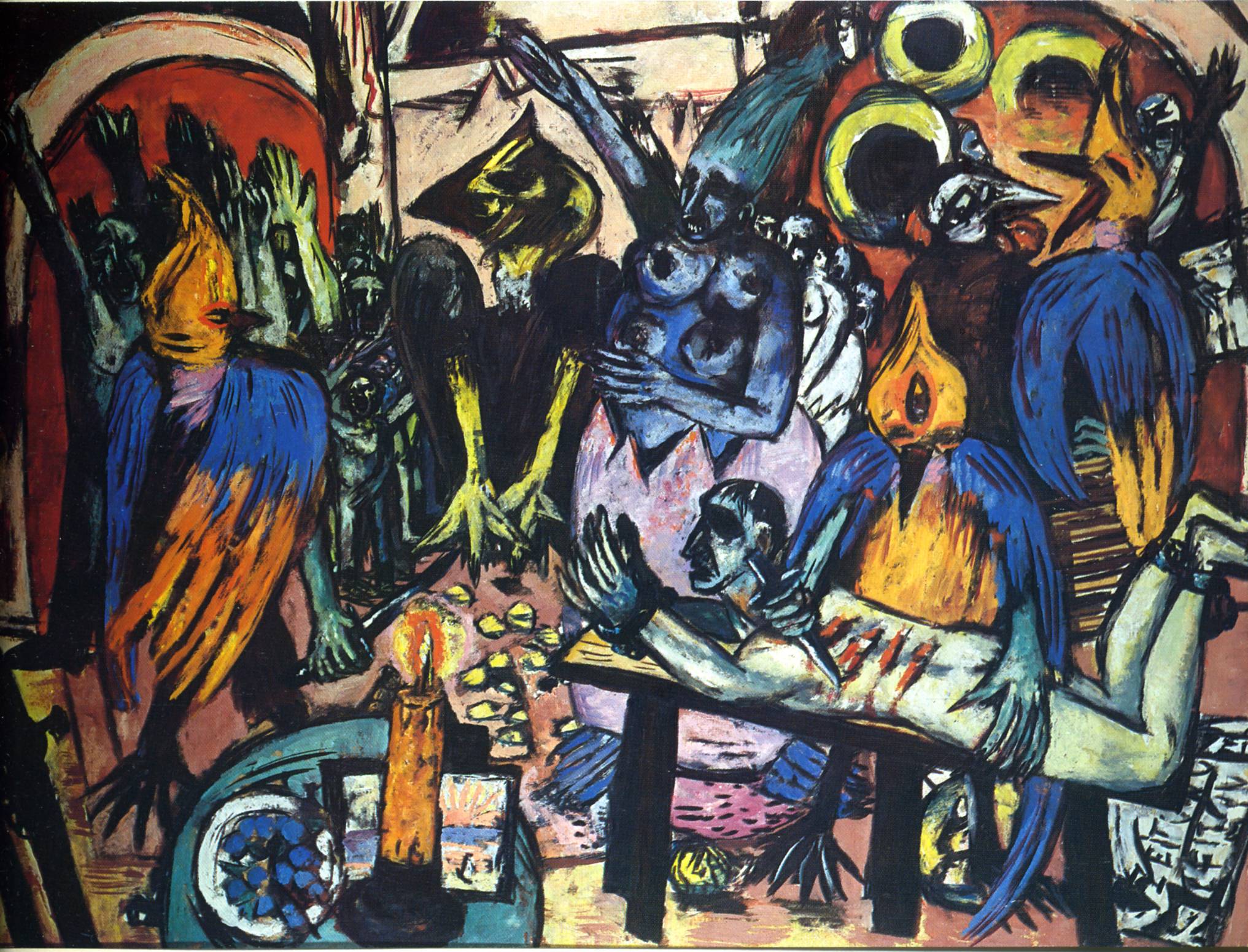 Max Beckmann’s Bird’s Hell (1938, estimate on request) will lead 20th Century at Christie’s, a series of sales that take place from 17 to 30 June 2017, in the Impressionist & Modern Art Evening Sale on 27 June 2017, when it will be offered at auction for the first time. One of the most powerful paintings that Beckmann created while in exile in Amsterdam it presents a searing and unforgettable vision of hell and is poised to set a world record price for the artist at auction. Begun in Amsterdam and completed in Paris at the end of 1938, this work ranks amongst the clearest and most important anti-Nazi statements that the artist ever made, mirroring the escalating violence, oppression and terror of the National Socialist regime. The painting will be on view in New York until 17 of May, Hong Kong from 25 to 29 May and London from 17 to 27 June 2017. Max Beckmann’s Bird’s Hell (1938, estimate on request) will lead 20th Century at Christie’s, a series of sales that take place from 17 to 30 June 2017, in the Impressionist & Modern Art Evening Sale on 27 June 2017, when it will be offered at auction for the first time. One of the most powerful paintings that Beckmann created while in exile in Amsterdam it presents a searing and unforgettable vision of hell and is poised to set a world record price for the artist at auction. Begun in Amsterdam and completed in Paris at the end of 1938, this work ranks amongst the clearest and most important anti-Nazi statements that the artist ever made, mirroring the escalating violence, oppression and terror of the National Socialist regime. The painting will be on view in New York until 17 of May, Hong Kong from 25 to 29 May and London from 17 to 27 June 2017.Painted with vigorous, almost gestural brushstrokes and bold, garish colours, Bird’s Hell envelops the viewer in a sinister underworld in which monstrous bird-like creatures are engaged in an evil ritual of torture. Presiding over the scene is a multi-breasted bird who emerges from a pink egg in the centre of the composition. To her right, a crouching black and yellow bird looms over golden coins spread before him, while behind the central figure, a group of naked women stand huddled together. Heightening the sense of hysteria is the group of figures standing within a glowing, blood red doorway to the left of the composition. Guarded by another knife-wielding bird, they return the bird-woman’s gesture, their right arms raised in unison in the same furious salute. At the front of the scene, a naked man – the symbol of innocence within this reign of terror – is shackled to a table, held down by another bird that is slashing his back in careful, horizontal lines. Continuing the Germanic tradition of the depiction of hell, this painting echoes the gruesome allegorical scenes of Hieronymus Bosch’s famed The Garden of Earthly Delights, while at the same time, takes aspects of Classicism and mythology to turn reality into a timeless evocation of human suffering. In this way, Bird’s Hell, like Pablo Picasso’s Guernica or Max Ernst’s Fireside Angel of the same period, transcends the time and the political situation in which it was made to become a universal and singular symbol of humanity. Adrien Meyer, International Director of Impressionist & Modern Art, Christie’s New York: "Bird’s Hell was painted in 1938 in Amsterdam as a direct attack on the cruelty of the Nazi regime. A year earlier, Hitler's government had confiscated over 500 of his works from German museums, and included some of these in the notorious Degenerate Art exhibition. This emblematic picture has since been unanimously recognized as the Guernica of Expressionism. The grasping composition echoes the fantastical world of 16th century master Hieronymus Bosch. The current owner first attempted to buy this masterpiece in 1956 and succeeded thirty years later, lending it since to the most prestigious exhibitions around the world. Its upcoming sale represents a unique opportunity to acquire not only a Beckmann monument but also a true piece of history." Jay Vincze, Head of Impressionist & Modern Art, Christie’s, London: “We are honoured to present such a seminal work by Max Beckmann at auction for the first time. Bird’s Hell stands alongside Picasso’s Guernica as one of the most politically charged paintings of its time and it is a rare opportunity to offer a work of such historical significance by Beckmann. For the artist there were two worlds, one of spiritual life and the other of political life. In this painting he is asking the viewer to decide which is more important. It is a terrifying, yet timeless history painting and a masterpiece of the artist’s oeuvre.” .jpg) .jpg) Egon Schiele Einzelne Häuser (Häuser mit Bergen) (1915, estimate: £20,000,000-30,000,000) was painted in the middle of the First World War and exemplifies the artist’s visionary understanding of landscape, which he used as an allegory of human emotion. Egon Schiele Einzelne Häuser (Häuser mit Bergen) (1915, estimate: £20,000,000-30,000,000) was painted in the middle of the First World War and exemplifies the artist’s visionary understanding of landscape, which he used as an allegory of human emotion.Sotheby’s is honored to announce that Egon Schiele’s masterwork landscape  Egon Schiele, Dämmernde Stadt (Die Kleine Stadt II) (City in Twilight (The Small City II)) signed Egon Schiele and dated 1913 (centre left) oil on canvas 35 5/8 by 35 1/2in. Painted circa 1913. Estimate $12/18 million. Courtesy Sotheby's. Dämmernde Stadt(Die Kleine Stadt II) (City in Twilight (The Small City II)) will highlight the Impressionist & Modern Art Evening Sale in New York on 12 November 2018.Painted in 1913,Dämmernde Stadt is one of Schiele's finest landscapes remaining in private hands, with comparable works now principally found in museum collections. The dreamlike view above the city of Krumau - birthplace of the artist's mother - documents the pivotal period during which Schiele established his singular and now-iconic visual language, after years of shadowing his mentor Gustav Klimt.Independent of its art historical importance, the work is distinguished by the remarkable family history it has brought to life.Dämmernde Stadt was purchased in 1928 by Elsa Koditschek, a young Jewish widow living in Vienna. During the course of her harrowing persecution by the Nazis following the annexation of Austria in 1938, the work was forcibly sold in payment of alleged debts to the very person who helped Elsa survive. Sotheby's will present the work this November as the resolution of a joint and private restitution between the present owners and Elsa's heirs.Elsa's story is told today through an extensive and incredibly rare family archive of correspondence she wrote throughout the war and for years after. However, her heirs had remained unaware of the landscape until recent years, when Sotheby's research on an unrelated picture uncovered reference to the Koditschek name. Lucian Simmons, Sotheby's Worldwide Head of Restitution,and Andrea Jungmann, Managing Director of Sotheby’s Austria,initiated a dialogue between the family and the present owners that has ultimately resulted in the present offering.Dämmernde Stadt is now on public view in Sotheby's London galleries for the first time in nearly 50 years, through 9 October. The landscape will return to our New York headquarters for the full exhibitions of our Impressionist & Modern and Contemporary Art auctions, which open on 2 November. Dämmernde Stadt is estimated to sell for $12/18 million in the 12 November auction. ’DÄMMERNDE STADT (DIE KLEINE STADT II) The series of large-scale townscapes painted by EgonSchiele between 1913 and 1917 show him working at the apex of his artistic powers, experimenting with elements of composition, color and form that would eventually lead him to Abstraction.Dämmernde Stadt depicts the small, medieval town of Krumau, the birthplace of Schiele’s mother and one of only two locations that are the subjects of his celebrated landscapes. Referred to by Schiele as the ‘‘ dead city’’ , Krumau’s compact configuration was intriguing to the artist, who captured its winding streets and crumbling buildings from perched atop the high left bank of the Moldau river - known today as the Vltava in the Czech Republic. The result of this radical approach to perspective is a flat pictorial dreamscape that reflects both his highly-personalized interpretation, as well as his emotional and psychological response to the storied town.These stylistic element is manifest in myriad characteristics throughout the canvas: the boldly-delineated shapes of buildings’ rooftops; twilight cast in a muted palette; and windows aglow with brilliant, jewel-likecolors reminiscent of Gothic stained-glass. In looking to a Medieval past, Schiele was aligned with a contemporary strain of Gothic revivalism. However he was also attuned with the artistic movements developing concurrently across Europe at the time. His adoption of the high viewpoint and his growing sensitivity to formal relations suggest that he was looking at the work of Post-Impressionist artists, such as Vincent van Gogh and Paul Cézanne. The influence of Klimt’s experiments with form, and the square format in particular, are also apparent in the present work was aligned with a contemporary strain of Gothic revivalism. However he was also attuned with the artistic movements developing concurrently across Europe at the time. His adoption of the high viewpoint and his growing sensitivity to formal relations suggest that he was looking at the work of Post-Impressionist artists, such as Vincent van Gogh and Paul Cézanne. The influence of Klimt’s experiments with form, and the square format in particular, are also apparent in the present work. Sotheby’s unveiled highlights from its upcoming Evening Sale of Impressionist & Modern Art in New York. The 16 May 2017 auction will be led by Egon Schiele’s first masterpiece: Danaë. Painted in 1909, the work marks Schiele’s first major oil painting of a female nude, and is estimated to sell for $30–40 million. Sotheby’s marquee spring auctions of Impressionist & Modern Art and Contemporary Art will be on public view in our York Avenue galleries beginning 5 May. AN EARLY MASTERWORK BY SCHIELE  Painted in 1909 when the artist was just 19 years old, Danaë is Egon Schiele’s first early masterpiece and an extraordinary example of his daring technique. Danaë introduces the artist’s iconic aesthetic, and epitomizes the Jugendstil movement’s influence at the time. The composition also pays homage to Schiele’s informal mentor, Gustav Klimt, who championed the young artist throughout his career. Painted in 1909 when the artist was just 19 years old, Danaë is Egon Schiele’s first early masterpiece and an extraordinary example of his daring technique. Danaë introduces the artist’s iconic aesthetic, and epitomizes the Jugendstil movement’s influence at the time. The composition also pays homage to Schiele’s informal mentor, Gustav Klimt, who championed the young artist throughout his career.Simon Shaw, Co-Head of Sotheby’s Worldwide Impressionist & Modern Art Department, commented: “It is a privilege to offer this sensational masterpiece by Egon Schiele. Danaë makes a bold and compelling statement, introducing his unique vision: the flattened pictorial space, the angular line, the radical cropping and stippled flesh rendered in pinks and greens. We have witnessed strong demand for breakthrough masterpieces, from Munch’s Vampire to Picasso’s La Gommeuse, and we look forward to presenting Schiele’s Danaë to collectors and museums in May.” |

